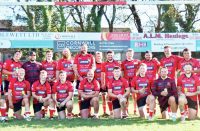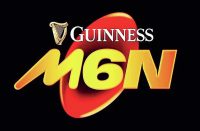Brendan Gallagher delves into some of rugby’s most enduring images, their story and why they are still so impactful

Iconic Rugby Pictures:
PART 22
Broken nose can’t stop Harinordoquy playing for Biarritz
May 2, 2010
What’s happening here?
Its May 2, 2010 and Imanol Harinordoquy, the France No.8, is packing down for Biarritz in their Heineken Cup semi-final against Munster at the Estadio Anoeta just over the border in San Sebastian.
Two weeks earlier he had badly broken his nose in two places in a Top 14 game but Imanol was Biarritz’s totem pole player, they needed him on the pitch against a marauding Munster side who took no prisoners in Europe. The night before the match a cleverly improvised facial guard had been banned by the officials so Biarritz went back to the drawing board and came up with this Hannibal Lecter contraption.
What’s the story behind the picture?
The fact that Imanol was willing to bite the bullet and go through the pain barrier says much about him but it also speaks volumes of his reputation as a player and his standing in the changing room.
Imanol was a distinctive character as well as a great athlete and No.8. Above all else he was a proud Basque, named after a famous Basque singer, who represented that nation within a nation. He spoke Basque, was an outstanding pelota player, ran the bulls at Pamplona most summers and his family were cattle breeders who don’t really recognise the French/Spanish border down the road. It was all Basque country. That love of a second nation however was cultural, not political. He condemned ETA and the campaign of violence they pursued.
In his pomp – say 2003 to 2012 – Imanol was a mighty international performer. I would argue that among other things he was the best lineout operator in the world. He virtually patented those incredible one-handed takes at the back of the line and, with a strong basketball background, scarcely needed his team’s lifters.
He might have been only 6ft 3inches, but his vertical jump was off the scale and in a one-onone contest without lifters there was nobody to touch him. It was absolutely bog-standard for Imanol to win 11 or 12 pieces of prime lineout possession every game. It got to the point when we stopped even commentating on his lineout work. And bear in mind all this was coming from the team’s No.8.
His palmares is impressive but not as complete as he would wish. Five Six Nations championships including three Grand Slams and two Top 14 titles with Biarritz. What frustrated him though was his losing appearance in the 2011 World Cup final, two other losing World Cup semifinals and defeat in the two Heineken Cup finals he appeared in. Imanol could be mercurial. In 90 per cent of the games he was either MOM or a strong contender for that honour. In the other 10 per cent of games, other than his lineout work, he could be strangely anonymous as if the batteries were empty and he had nothing much to offer.
“To compound his agony he broke two ribs in the first five minutes”
A sans jour as the French cycling community call it – a day without either energy or inspiration. That frustrated fans and coaches alike and for such a great player he found himself dropped more often than you would expect.
Perversely he was so good there was little or no tolerance to those few days when he was off the pace.
What happened next?
Imanol played his heart out in a rugged arm wrestle and just to compound his agony, he broke two ribs in the first five minutes, the most agonising of injuries to deal with in the heat of battle. Three or four times he went down for treatment and Biarritz suggested he went off but he waved them away. In the 66th minute, with the game nearly won, he succumbed and dragged himself off the pitch to a thunderous ovation and the mass waving of red Basques scarves by the fans. Biarritz, with Dimitri Yachvilli deadly with the boot, won to advance to the final against Toulouse.
Why is this picture iconic?
It’s an enduringly striking image of a rugby player going way beyond the call of duty and is even stronger when you know the Basque background of the player involved. Having digested that we can understand the supreme importance of Imanol, one of the few Basque players in that Biar- ritz team, taking the field in this semi-final in the Basque citadel of San Sebastien. It says this occasion is important, it transcends sport, it demands courage and sacrifice and he, Imanol, would set the tone by putting his already battered and broken body on the line.
On this occasion it is Imanol but every side in history can point to players who have heroically crashed through the pain barrier to serve their team. Jean Pierre Rives with his broken collarbone against New Zealand, Mike Teague with his separated shoulder playing for the Lions against Australia, JPR battling on for Bridgend after having his face stitched back together against New Zealand. And so on.
Footnote. There was no fairytale ending for Imanol. Biarritz lost 21-19 in the final and that game signalled the start of a long slow decline at Biarritz. They won the European Challenge Cup in 2012 but were relegated to ProD2 the following season where they have languished ever since.























